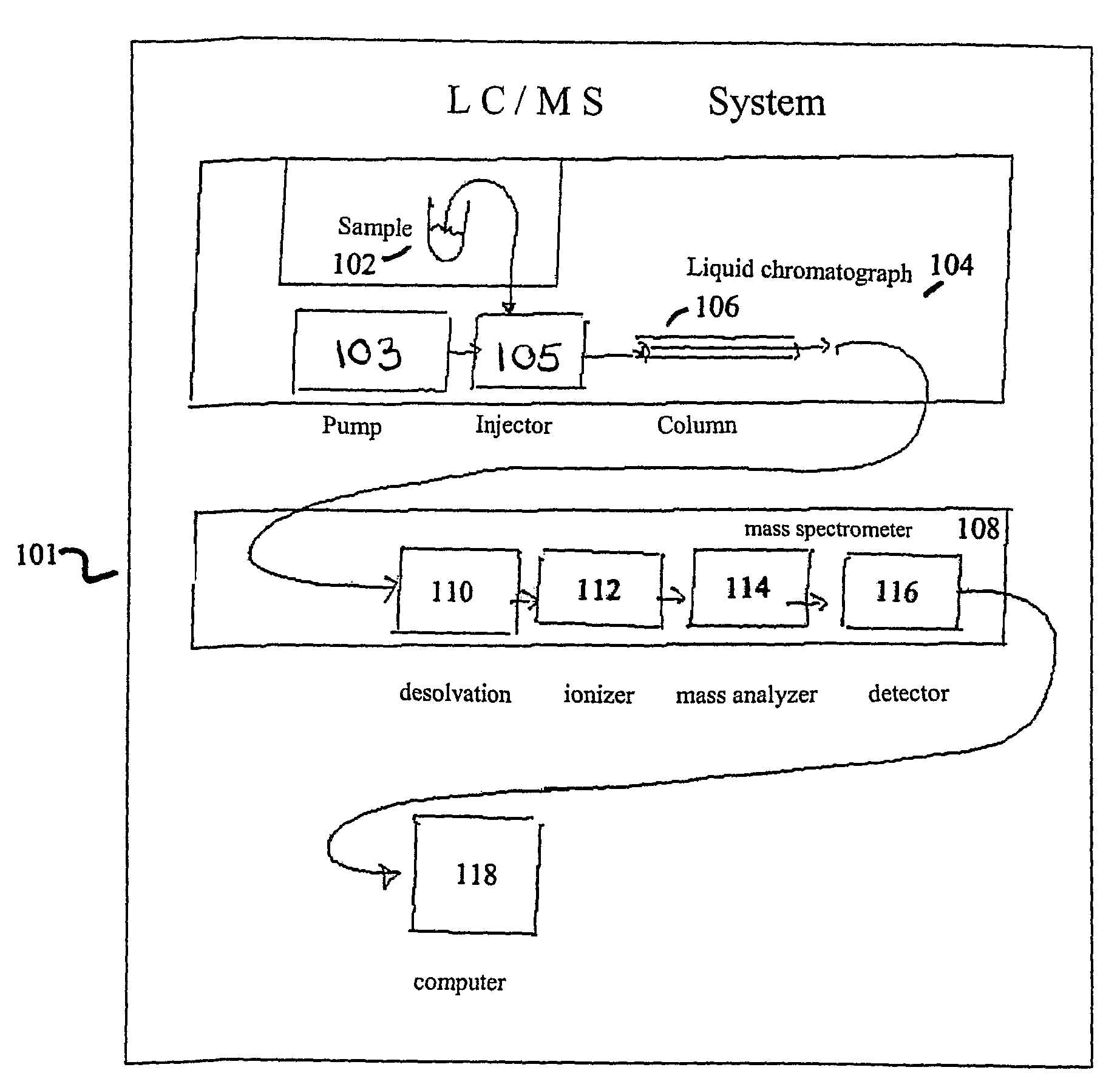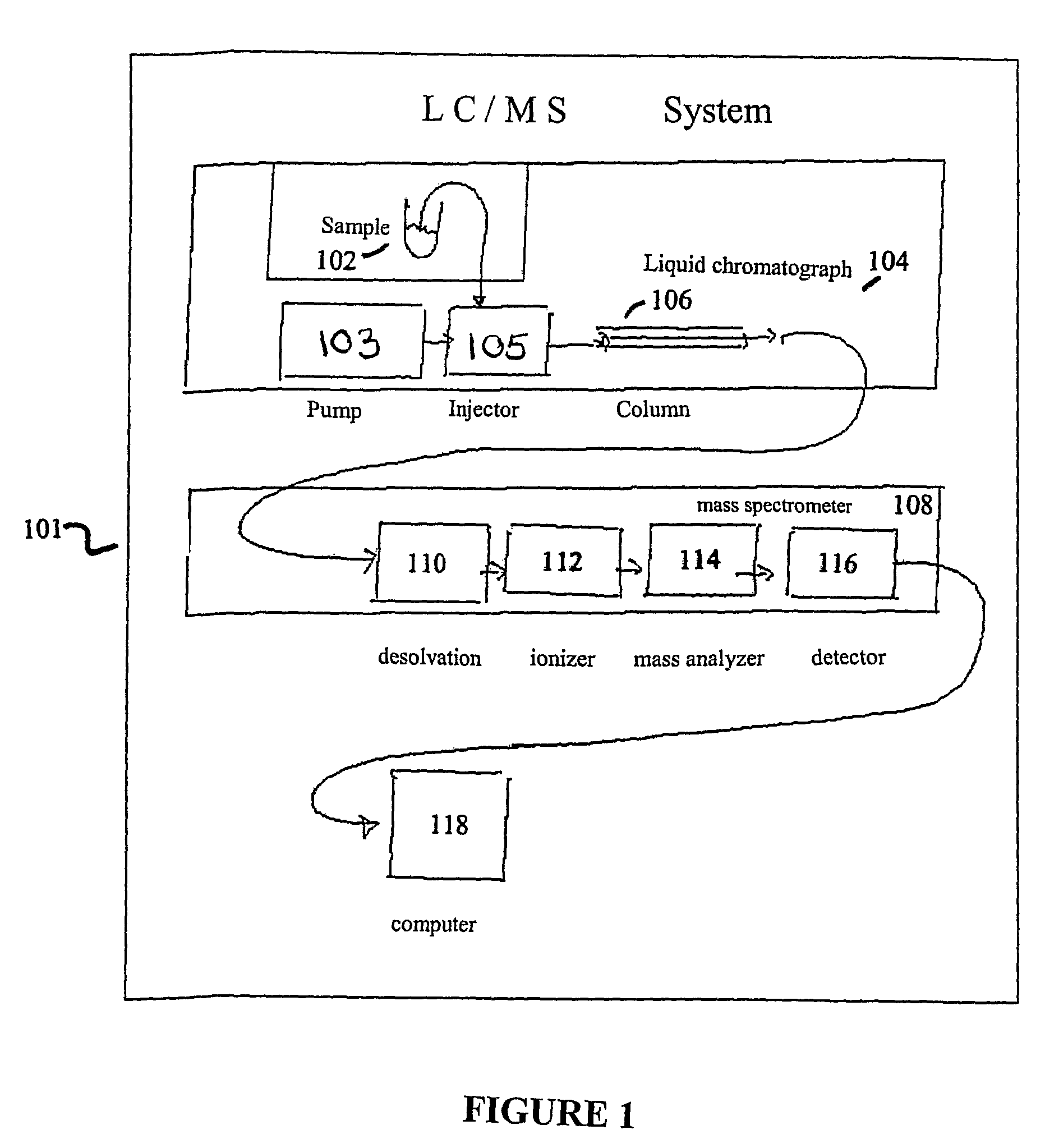Apparatus and method for identifying peaks in liquid chromatography/mass spectrometry data and for forming spectra and chromatograms
a liquid chromatography and mass spectrometry technology, applied in the field of liquid chromatography and mass spectrometry, can solve the problems of ion detection suffering from background noise, sample containing many molecular species producing spectra that are too complex for interpretation or analysis using conventional mass spectrometers, and reducing the completeness, accuracy and reproducibility of lc/ms experimental results, so as to improve the completeness, accuracy and reproducibility of results, and improve the effect of lc/m
- Summary
- Abstract
- Description
- Claims
- Application Information
AI Technical Summary
Benefits of technology
Problems solved by technology
Method used
Image
Examples
Embodiment Construction
[0068]Embodiments of the present invention can be applied to a variety of applications including large-molecule, non-volatile analytes that can be dissolved in a solvent. Although embodiments of the present invention are described hereinafter with respect to LC or LC / MS systems, embodiments of the present invention can be configured for operation with other analysis techniques, including GC and GC / MS systems.
[0069]FIG. 1 is a schematic diagram of an exemplary LC / MS system 101 according to an embodiment of the present invention. LC / MS analysis is performed by automatically or manually injecting a sample 102 into a liquid chromatograph 104. A high pressure stream of chromatographic solvent provided by pump 103 and injector 105 forces sample 102 to migrate through a chromatographic column 106 in liquid chromatograph 104. Column 106 typically comprises a packed column of silica beads whose surface comprises bonded molecules. Competitive interactions between the molecular species in the ...
PUM
| Property | Measurement | Unit |
|---|---|---|
| mass spectrometer | aaaaa | aaaaa |
| liquid chromatograph | aaaaa | aaaaa |
| mass-to-charge ratio | aaaaa | aaaaa |
Abstract
Description
Claims
Application Information
 Login to View More
Login to View More - R&D
- Intellectual Property
- Life Sciences
- Materials
- Tech Scout
- Unparalleled Data Quality
- Higher Quality Content
- 60% Fewer Hallucinations
Browse by: Latest US Patents, China's latest patents, Technical Efficacy Thesaurus, Application Domain, Technology Topic, Popular Technical Reports.
© 2025 PatSnap. All rights reserved.Legal|Privacy policy|Modern Slavery Act Transparency Statement|Sitemap|About US| Contact US: help@patsnap.com



